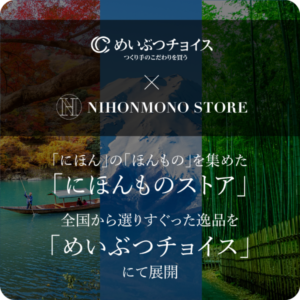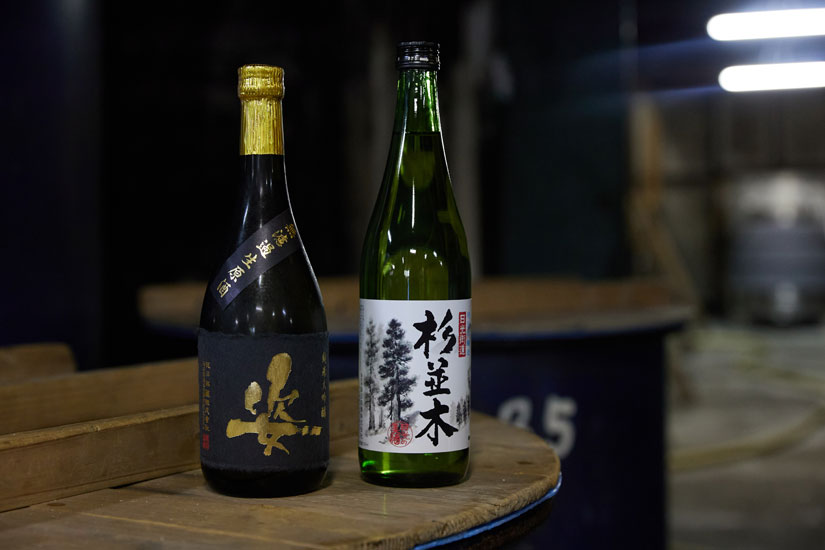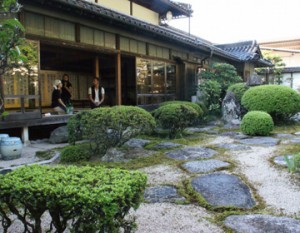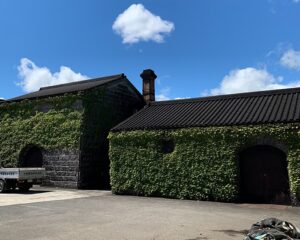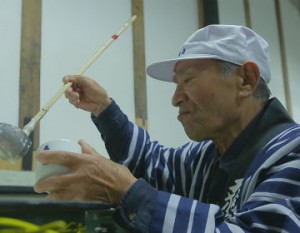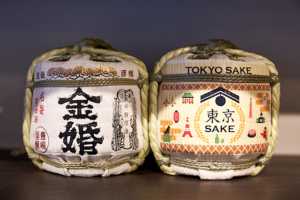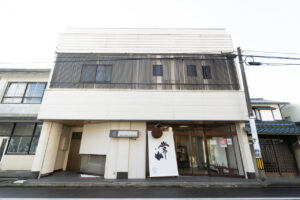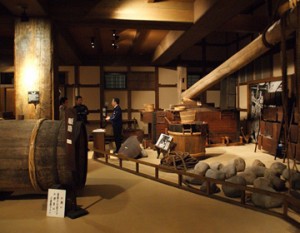Tochigi City is located in the south of Tochigi Prefecture. Iinuma Meikozo is located in the northern part of the city, in a peaceful area surrounded by fields in Nishikata-machi. Iinuma Meinjo is a sake brewery that produces straightforward sake, focusing on two brands: “Suginamiki,” which is well-loved by the locals, and “TATARA,” which focuses on unfiltered, unpasteurized sake.
The head of the family for generations gives the sake a new name.
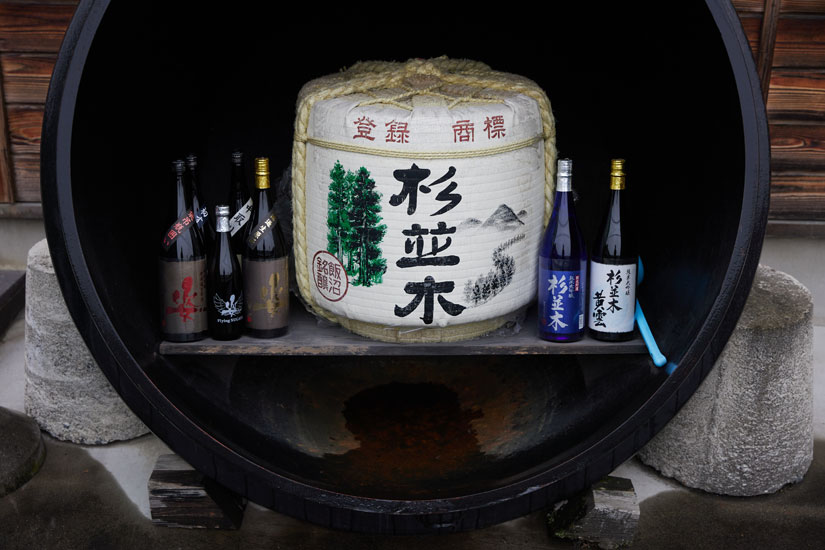
Tetsunori Iinuma, president of Iinuma Meikozo Co. He himself is a master brewer.
Iinuma Meinjo was founded more than 200 years ago in 1811. The founder, Mr. Iwajiro, left his birthplace in Niigata and trained at a sake brewery in Utsunomiya before setting up his own business here.
As the brewery has continued to produce sake over the generations, various brands have been created. Currently, three brands remain: “Fuki,” a regular sake created by his grandfather; “Suginamiki,” created by his father; and “Sugata,” created by Mr. Iinuma, now the ninth generation, of which “Suginamiki” and “igata” are the two main brands produced.
Suginamiki” is named after the Nikko cedar trees that impressed Mr. Iinuma so much that he named his sake after them.
Iinuma’s father, Kunitoshi, was the brewer. Kunitoshi often visited Nikko on business trips to liquor stores.
On the east side of Nishikata-machi, where Iinuma Meinjo is located, is the “Nikko Reiheishi Kaido,” a road that was taken by the imperial envoys (Nikko Reiheishi) to Nikko Toshogu during the Edo period (1603-1868). Even today, many people take this road when going to Nikko, as did my father Kunitoshi.
As this road heads north toward Nikko, it passes through the Nikko Cedar Namiki Kaido, a road lined with some 12,000 cedar trees on both sides of the road. Kunitoshi was impressed by the grandeur of the cedar trees every time he passed along the road. He suddenly realized that there was no sake named after this wonderful landmark in Tochigi Prefecture, so he decided to sell a sake named “Suginamiki.
Suginamiki, created by Niigata’s Echigo Toji, has a light, dry taste. It is made with locally grown rice such as “Yamada-Nishiki” and “Yume-Sarara” produced by local contract farmers, as well as with yeast produced in the prefecture.
To keep the brewery going, Iinuma himself went into sake brewing.
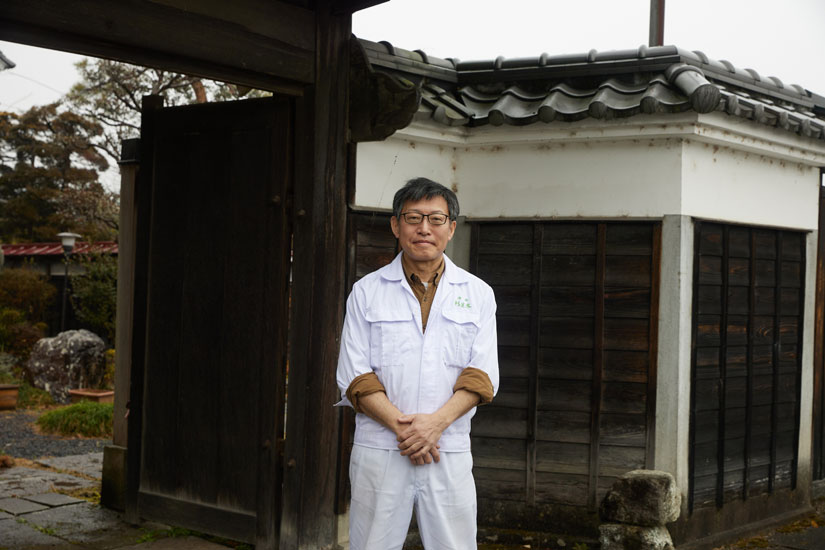
The current president, Tetsunori Iinuma, joined Iinuma Meinjo in 1994 after working outside of the prefecture. At first, he was not directly involved in sake production, such as bottling and delivery. However, the toji (master brewer) who had come from Niigata was getting old, and Mr. Iinuma felt that “without local sake brewers, we would be losing our edge. He hired locally, but after less than a year, he was forced to resign.
Mr. Iinuma said, “Please don’t quit.
Please don’t quit. I will join the brewery, and we will start from the kamaya (the name given to the person who washes and steams rice in the sake brewing process) together.
This was the moment when the brewery owner himself decided to start sake brewing.
Freshly pressed sake tastes the best. The commitment to unfiltered, unfiltered, unfiltered sake
Another concern of Mr. Iinuma, who has returned to Iinuma Meikozo, is that people will think that “Suginamiki” is a Nikko sake. He wanted to make a brand with a local origin, and that is what “Sagata” is.
The name was taken from the “Sugata-mi no Ike” pond in Manago, Nishikata Town, which is associated with the legend of Obikuni, the eight hundred bishop nun. The original “Sugata” was a junmai ginjo produced by the Echigo toji, which involved filtration, hi-ire, and addition of water after the sake was pressed. While this was naturally delicious, Mr. Iinuma felt more strongly that “sake tastes best when it is pressed as it is! He said, “Unfiltered nama sake tastes better when it is pressed.
Iinuma decided that he wanted to convey the taste of unfiltered, unpasteurized sake, and decided to make mainly unfiltered, unpasteurized sake without filtration, heating, or adding water after pressing. This was about 20 years ago.
Sake brewing using not only local but also Hokkaido rice
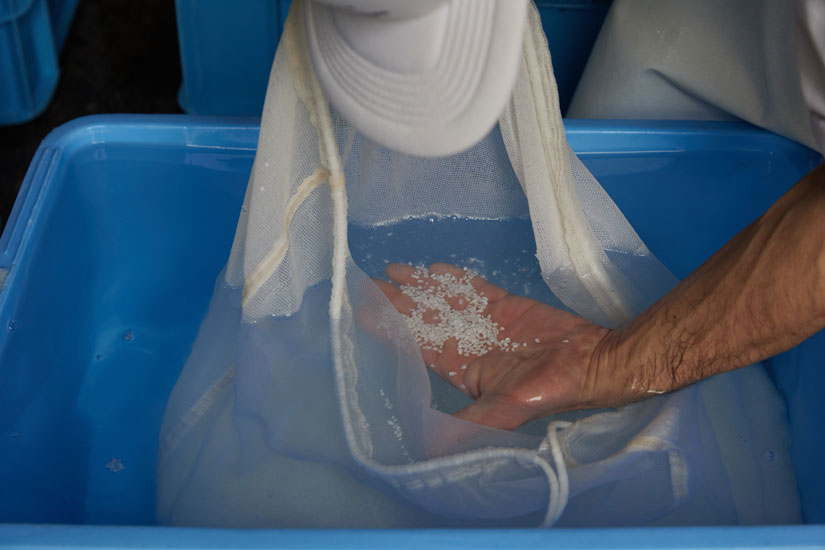
Currently, Suginamiki is made with locally grown rice such as Yamadanishiki, Gohyakumangoku, and Yume Sarara, all of which are grown by local farmers, but in addition to local rice, Aiyama from Hyogo Prefecture, Omachi from Okayama Prefecture, and Hokkaido rice such as Ginpu, Comet, and Kitashizuku are also used. Hokkaido rice is also used.
The reason why they actively use Hokkaido rice is because the owner of a Hokkaido izakaya, who likes “TATARA” and is a close friend of theirs, mentioned to me that he would like to try “TATARA” made with Hokkaido rice.
I thought Hokkaido rice might be too hard, but if you make it right, the flavor comes out right and it tastes great,” says Iinuma. Iinuma says that pumping water for the rice requires some experience and know-how, but “it produces a beautiful flavor.
Using the Blessings of Nikko’s Rivers in Sake
Iinuma Meikozo’s water is said to come from the underground water of the Oya River that flows through Nikko. The Oya River, which originates in the majestic mountains of Nikko, is a first-class river that flows through Nikko City via Kegon Falls, one of the three most famous waterfalls in Japan, and then joins the Kinugawa River.
The subterranean water pumped up from 14m below the ground is soft water, and sake made with this water has a rich aroma and flavor, and is mild on the palate. When a local company cooperated in a water quality survey, it was reported that “the water here is similar in composition to spring water from Mt.
For those who seek this taste and continue to drink it
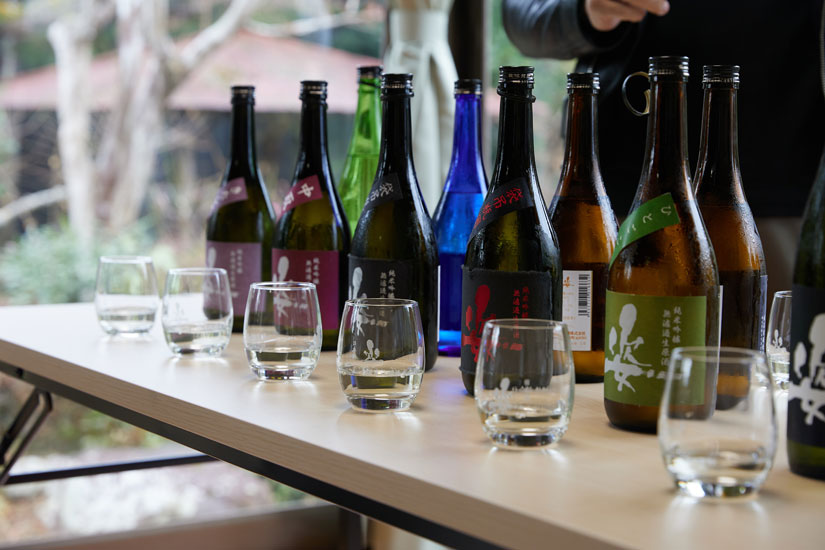
Most of the sake produced under the brand name of “TATAJI” is “unfiltered, unblended sake. The fresh, umami, and rich taste of unfiltered nama sake is attractive, but its richness and high alcohol content may divide consumers’ tastes.
While some sake breweries have reduced the alcohol content or lightened the flavor to make it less heavy, Iinuma says, “We have to make our sake ‘straight’.
These days, there are a lot of sweet sake with a refreshing taste, but there are always people who want a more “harsh” sake. I think that’s why we have a sake brewery like ours.
Sake brewed “straightforwardly,” without being influenced by trends
The current production volume is approximately 550 koku (about 55,000 bottles), with about 300 koku of “Suginamiki,” a light, dry sake made with locally grown rice and yeast, and about 250 koku of “Sugata,” an unfiltered, unpasteurized sake with a robust aroma and flavor that makes full use of the characteristics of carefully selected rice, including rice grown in Hokkaido.
When we asked Mr. Iinuma what the future holds for the brewery, he answered humbly, “We have no plans to greatly increase the production volume, but to sell out what we make and keep the brewery going as long as possible.
Every year, Mr. Iinuma sends samples to sake retailers, saying, “If you really like it, please order it. Iinuma’s sales approach is just as earnest as his sake brewing.
Iinuma-san’s expression is smiling from start to finish as he says, “I want to continue to make sake that people will recognize as Iinuma’s own when they drink it.
His expression is always smiling. He is unpretentious and gentle, yet you can suddenly sense the strength of his core. It is as if Mr. Iinuma himself is the embodiment of the sake he produces.
Sake made in a land blessed with abundant nature, air, and water. This earnestness is the reason why Iinuma Meikozo’s sake continues to be loved.
